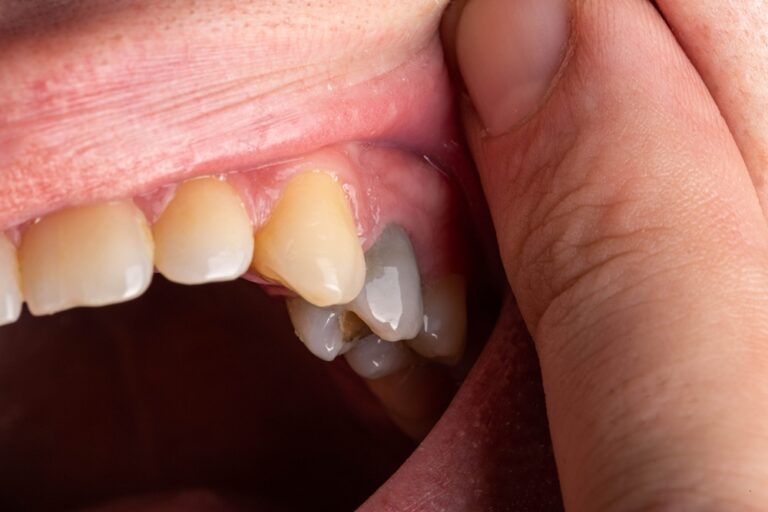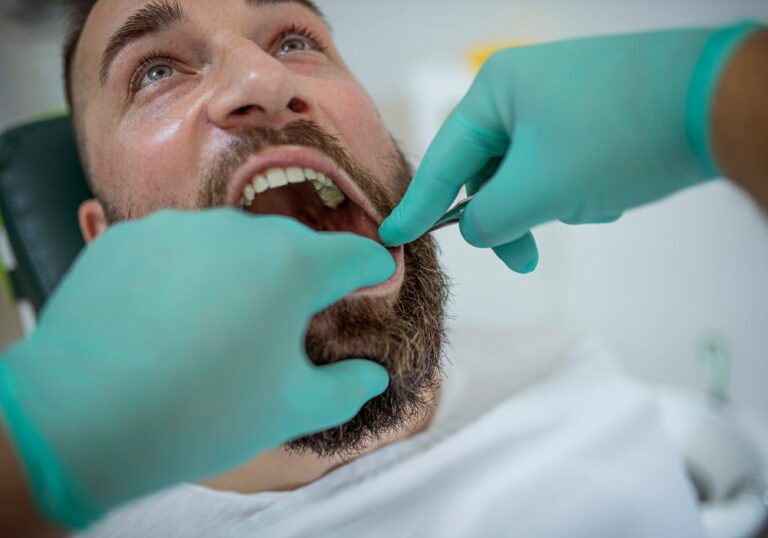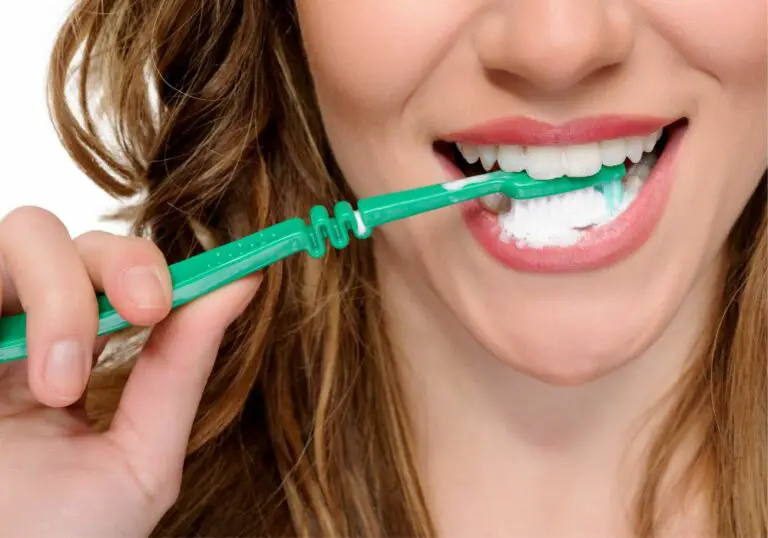Braces are a common orthodontic appliance used to help straighten teeth and improve the bite. Many people wonder if they can fully bite down and clench their teeth when they have braces on. The answer is yes, you can bite your teeth together with braces, but there are some important considerations.
How braces affect biting in detail

Braces use gentle pressure over time to shift the position of the teeth. This process requires that the teeth are able to move, which means you cannot apply too much biting force. However, normal biting and chewing forces are fine and actually encourage the teeth to settle in their new positions.
Direct wire braces in detail
Traditional metal braces use brackets glued to each tooth which are then connected by a wire. The wire applies forces to shift the teeth, while the brackets provide anchors.
The brackets are firmly cemented to each tooth, but biting too hard could potentially break the cement seal. The wires also need room to flex and move as teeth shift. Applying excessive bite force by clenching or grinding can lead to bent, broken or dislodged wires.
However, normal biting force while eating food is perfectly fine. The gentle pressures of closing your teeth together allows the appliances to do their job of moving teeth. You should still close your teeth together fully when biting and chewing.
Take care when initially biting into foods like apples, carrots or nuts. Over time, you’ll get used to finding the right angles to bite solid foods with braces. Small nibbles are better than big bites. Avoid very sticky, hard or crunchy foods that could grab and dislodge the wires. Overall though, normal biting and chewing is fine and won’t interrupt the progress of your orthodontic treatment.
Clear aligners in detail
Clear aligner trays are made of thin, transparent plastic custom-fitted to your teeth. Unlike traditional braces, the aligners can be removed for eating and brushing teeth.
The smooth plastic material covers each tooth fully and applies light, distributed forces across the crown surface to move teeth. Clear aligner trays are more fragile than metal braces. The plastic can deform if you bite too hard while wearing them.
You must be able to fully bite your teeth together while wearing clear aligner trays. This allows your teeth to settle into their proper aligned positions within the tray. Biting down fully also seats the aligners correctly against your teeth. Light biting force is needed to keep the trays snug so they continue moving your teeth effectively.
Discomfort from biting in detail
Braces take some getting used to, so biting down fully may feel awkward or uncomfortable at first. As your teeth begin shifting position, they can feel slightly loose in their sockets. The teeth may also be tender due to pressures from the appliances. This discomfort should be mild and ease over time as your teeth adjust to the braces.
See your orthodontist if intense pain prevents you from biting down fully. They can assess the fit of the braces and provide relief. In most cases, being able to bite your teeth together normally is important for progressing through orthodontic treatment.
Problems caused by not biting down fully in detail
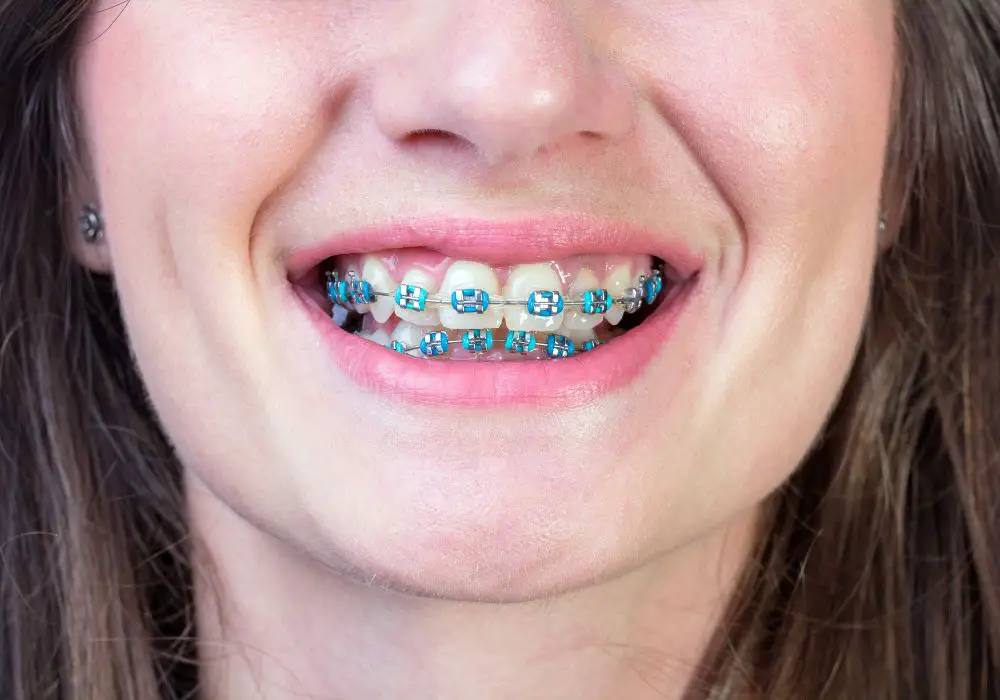
If you actively avoid biting your teeth fully together to avoid pain or discomfort from your braces, it can actually lead to bigger problems down the road.
Open bite in detail
Not biting down completely for weeks or months can gradually develop into an open bite. This is when the upper and lower teeth no longer overlap and come together properly.
With an open bite, the molars may still touch but the front teeth become spaced apart. This can lead to speech issues, jaw joint problems, and eating difficulties. An open bite is challenging to correct after braces are removed, often requiring more orthodontic treatment or surgery in severe cases.
Poor tooth positioning in detail
The pressure from normal biting and chewing helps “set” the teeth in their new positions as moved by the braces. Not biting down fully reduces this settling force on the teeth. This could result in teeth shifting back or settling in crooked or overlapped positions after braces are removed.
Additionally, with clear aligners the lack of biting pressure allows teeth to move beyond where they should within a given tray. This reduces precision of tooth movements, leading to poor positioning.
Appliance damage in detail
Most types of orthodontic braces rely on the teeth being in full contact to work effectively. Biting forces allow brackets, wires, and clear aligner trays to maintain snug contact with the teeth. This friction allows them to control tooth positions.
Not biting down completely increases the risk of appliances loosening and failing prematurely. This can lead to lost treatment time for repairs, and slower overall progress.
Jaw joint problems in detail
The temporomandibular joint (TMJ) connects the lower jaw to the skull. This hinge joint allows opening and closing of the mouth. Not biting down fully can strain the TMJ over time.
TMJ disorders are characterized by popping sounds, pain, muscle tightness, and dysfunction in jaw movement. Braces alone don’t cause TMJ problems, but avoiding biting down fully because of brace discomfort certainly can.
Avoiding these issues requires learning to bite down fully with braces despite any temporary discomfort. Be sure to follow your orthodontist’s bite instructions closely.
Tips for biting teeth with braces in detail
It takes time getting used to biting and chewing with braces. Here are some helpful tips:
- Go slowly at first, don’t force your bite shut. Give your teeth, jaw muscles, and appliances time to adjust day by day.
- Chew soft foods initially until your teeth feel more settled in their new positions. Yogurts, scrambled eggs, and mashed potatoes are good options.
- Apply wax or silicone covers to braces if they are irritating your lips or cheeks when you bite down. This protects soft tissues from being scraped.
- Over-the-counter pain medication like ibuprofen or acetaminophen can temporarily relieve discomfort from biting on braces.
- Use proper oral posture and keep your lips gently together so your teeth bite together naturally. Otherwise front teeth may flare out.
- Ask your orthodontist about bite plates or adjustments if discomfort persists long-term. They can fine-tune appliances.
- Practice swallowing with your teeth lightly touching to train your jaw muscles.
- Stay on track with your orthodontic adjustment appointments for regular changes to your braces. This optimizes progress.
With patience and care, you should be able to bite your teeth together normally within a few weeks of getting braces. Avoiding biting down fully will only extend treatment time and increase the risk of orthodontic complications.
Risks of clenching and grinding teeth with braces in detail
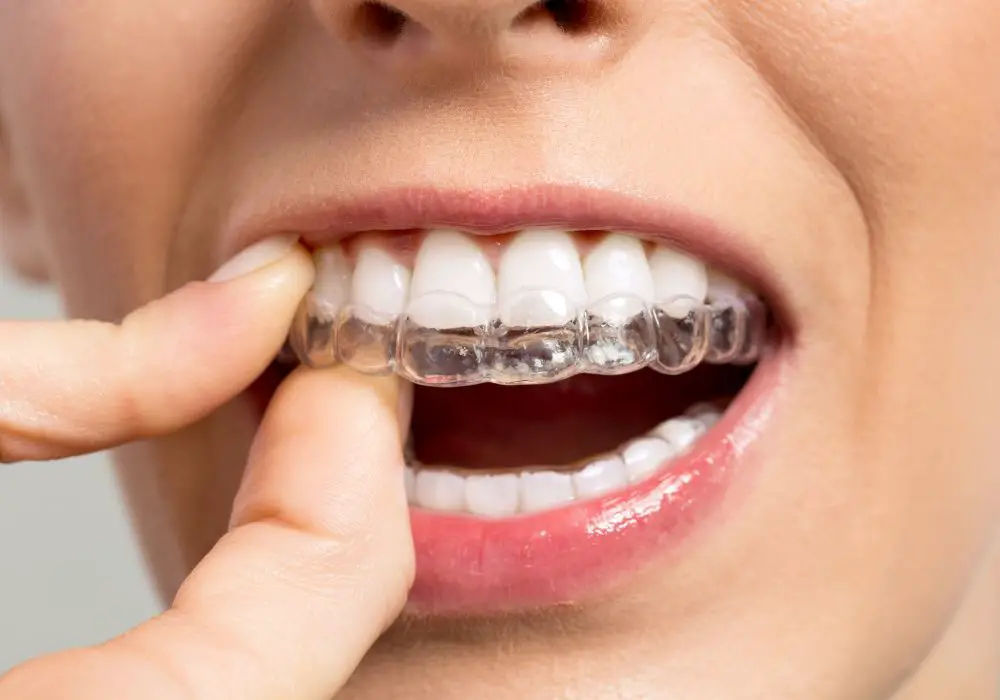
Clenching or grinding of the teeth is called bruxism, which can damage braces. Some clenching is normal, especially when getting used to braces. But excessive, forceful clenching or grinding places too much pressure on the braces and teeth.
Risks include:
- Breakage of archwires, brackets or clear aligner trays from the extreme pressures placed during clenching and grinding. This can require emergency orthodontic repairs.
- Loosened cement bonds on brackets allow them to detach from teeth, interrupting force applications.
- Misaligned teeth from being moved too quickly into incorrect positions due to frequent heavy biting. This requires re-treatment.
- Tooth sensitivity and aching pain from excessive forces on teeth, which may require temporary use of pain relievers.
- Wearing down tooth enamel from chronic grinding, which weakens tooth structure. This also increases decay risks.
- Headaches and sore jaw muscles from overuse related to bruxism. Physical therapy may be needed.
A custom nightguard should be provided by your orthodontist to protect braces if you have symptoms of grinding or clenching. Getting tense facial muscles adjusted can also help minimize these damaging habits.
When not to bite down with braces in detail
There are certain situations when you should avoid biting down fully with braces:
During adjustments in detail
Orthodontic adjustments involve removing the tiny wire ties and changing out the main archwires. At this point the braces are essentially “active” and could shift if bitten down on.
Avoid hard biting until all the new wires are tied in with ligatures and cut to the proper length. The orthodontist will check that the new archwire lies flat before allowing normal biting. Prematurely clenching could deform wires before they are set in place.
With damaged appliances in detail
If a section of archwire is clearly broken or a bracket comes partially loose, do not bite down without assessing the damage. Attempting to bite onto a damaged wire or loose bracket likely means something is not properly positioned. This can then lead to more breakage and unplanned tooth movements from uneven forces.
Carefully remove any detached appliance pieces. Save them and contact your orthodontist’s office promptly. They will identify if repairs are needed before treatment can resume. Do not keep biting on damaged braces.
Around sharp edge wires in detail
Sometimes wire ends can work themselves out of the ligatures and poke out. The wire edges may then feel sharp against the cheeks. Do not bite down fully until these ends are covered with wax to prevent injuries.
Contact your orthodontist promptly to have any protruding sharp wire ends clipped short or tucked back under the ligatures. Do not bite directly onto exposed wire ends.
Around broken teeth in detail
Cracked, fractured or injured teeth need to be seen by a dentist right away before fully biting down. Damaged teeth may have sharp edges that could further injure the gums, cheeks or tongue when bitten on. Avoid directly touching braces against broken tooth surfaces.
See a dentist immediately for restoration or extraction of injured teeth if needed. Braces may need to be removed around broken teeth depending on the damage. Do not bite on known cracked or broken teeth.
With mouth injuries in detail
Cuts, lesions or sores in the mouth will likely be irritated and painful if bitten on. Stick to soft foods and avoid hard biting until any mouth injuries have fully healed. Let your orthodontist know about any mouth trauma so braces can be adjusted if needed during the healing period.
In most situations, normal biting and chewing is fine with braces as long as you take care. Pay attention to any signs of appliance damage or looseness and avoid hard, sticky foods. Practice proper oral hygiene and see your orthodontist regularly. With patience and care, you can successfully bite your teeth together throughout orthodontic treatment.
Frequently Asked Questions (Detailed)
Can I bite into foods like apples or carrots with braces?
You can, but take care and begin slowly. Cut up harder foods into small pieces first and chew slowly using your back teeth. Avoid aggressively biting into whole apples or carrots with front teeth as this places concentrated force in one spot that could damage braces. If any discomfort occurs, stop eating the hard food. Over time, you’ll learn the proper angles to take small nibbles as your teeth adjust to the braces.
What happens if I avoid biting down when I get my braces on?
Not biting down fully for more than a day or two once braces are installed can allow your bite to gradually open. As the powerful jaw muscles relax, the teeth can flare out and lose proper contact. This maladaptive process prevents your teeth from settling into their ideal new positions. An open bite often requires restarting braces after correction.
Is it normal for biting to hurt a lot the first few days with braces?
Mild discomfort from pressure on the teeth when first biting with new braces is normal and will subside. But more severe pain likely signals a problem needing attention, such as an ill-fitting wire poking your gums or a bracket placed in an incorrect position on the tooth. Contact your orthodontist if initial biting causes pronounced pain for assessment.
Can I chew gum with braces?
Chewing gum is usually discouraged with braces since it can bend wires and pull brackets off teeth. Sticky gum can also get stuck deep into the braces. However, some orthodontists may allow occasional chewing of sugar-free gum for short periods. Avoid overly hard or sticky gums that could grab and damage appliances.
What should I do if a bracket comes loose when biting?
Do not keep biting down once you notice a bracket loosening. Carefully remove any detached bracket and wire segment. Temporarily save them, but avoid swallowing. Contact your orthodontist’s office promptly – they will want to replace the bracket in the precise position on your tooth so your treatment can continue progressing normally.
Key Takeaways (Detailed)
- Normal biting and chewing forces are fine with braces and actually encourage teeth shifting into corrected positions.
- Not biting down fully for prolonged periods risks developing an open bite, appliance breakage, and other orthodontic problems.
- Discomfort when first biting with new braces is common and should steadily improve within a couple weeks.
- Carefully bite into solid foods at first to avoid damaging braces until your mouth adjusts.
- Clenching and grinding can break wires and brackets – try to keep teeth slightly apart when not eating.
- Do not bite down onto damaged braces, loose brackets, broken teeth, or around mouth injuries.
- With patience and proper oral care, orthodontic treatment can progress smoothly while still biting teeth together normally.



